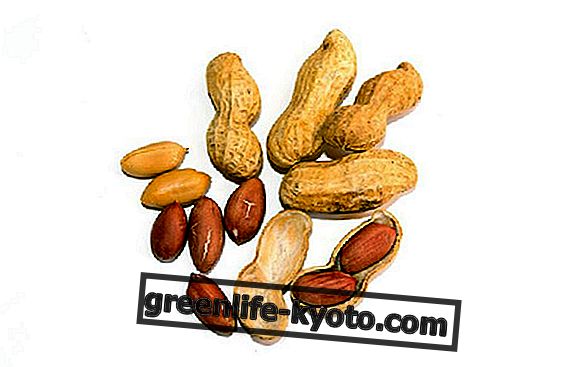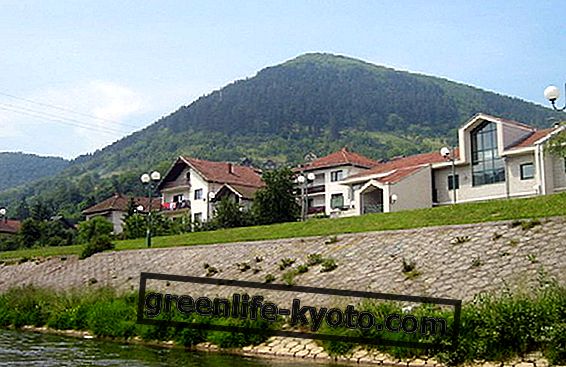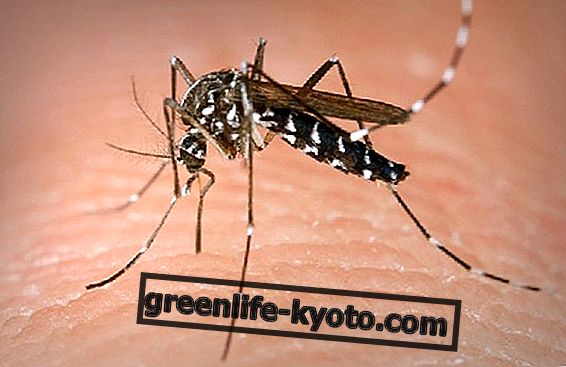
Peanut is a plant native to Brazil but which then spread throughout the world, particularly in Asia and Africa. Even in Italy peanuts are successfully grown and the most productive areas of our country are Veneto and Campania.
Peanuts are also known as American peanuts or ground pistachios while their scientific name is Arachis hypogaea: they belong to the legume family (or fabaceae) such as peas, beans and chickpeas of which it also shares the botanical structure, in fact the peanut plant is very similar to that of chickpeas .
The peanut plant grows up to 30 centimeters, but unlike the chickpeas that produce the edible part inside the pod and therefore in the fruit, the peanuts produce the edible part under the ground . In reality, there are more than 40 peanut species and they are divided into two groups according to their habit: whether erect-shrubby or bushy.
The plant is covered with a light down and its leaves are composed and typical of legumes with an oval shape and close at night . Its flowers are continuous yellow in color and produce pods containing peanut seeds.
The pod is woody and slightly spongy with usually two seeds inside, but in some varieties there may also be three or four seeds. Finally, these seeds are coated with a light red-colored film that serves as a protection.
Peanut crop needs
Peanut loves fairly loose soils with medium dough. The soil must be very light and melted like sand precisely because the peanuts grow in the underground part of the plant and therefore in a hard and compact soil like clay they struggle to develop.
In a similar way to carrots and potatoes they need a loose and well-drained soil in order not to incur radical decay or other root problems.
The peanut plant does not need a lot of water indeed it tolerates drought well . The irrigation system can be furrowed or rainy because usually in the soil at the neck of the plant tamping is done and therefore a drip irrigation system is not recommended.
Peanut, being a plant of the legume family, has a root system capable of fixing nitrogen in the soil, thus improving soil fertility for subsequent crops . This is an advantage because the peanuts are so well placed in the intercropping with other plants and in the rotation of the crops precisely because of their ability to improve soil fertility.
Peanut plants prefer sun exposure and love heat, so that the ideal temperature for their development must be above 15 degrees. Indicatively the flowering of the plant takes place when the temperatures are above 20 degrees and the pods ripen with temperatures between 25 and 30 degrees .
Grow the peanut plant
The peanut plant in Italy can be grown with satisfaction both in the open field and in pots . In particular, in the center and in the south the productions are better but also in the north we can experience this cultivation having some extra care.
Peanuts are sown and grown from late spring when the risk of frost no longer exists. In fact, peanuts need warm temperatures since they originate from tropical countries and for this reason in winter in our country they are protected with nonwovens.
The best time for cultivation is precisely when the temperature exceeds 15 degrees and until the end of the summer cultivation can continue. Indicatively, the cultivation cycle lasts 5 or 6 months from March to April until August-September .
The first step is to bury the peanut seeds or transplant the seedlings purchased from the nursery or from a specialized agrarian.
If we want to start from the seed we will be able to collect from previous cultivations made or buy them from some farmer or take them on the web but remember that once we get the seeds we will have to keep them in a dry place and the reddish film that wraps them must be intact even during sowing, otherwise the seed will not sprout.
The availability of the seed is not so simple also because the peanuts that we find on the market for food use are processed and treated even with high temperatures and toasted so their sprouting is no longer possible.
The plant in full field is done by spacing the 30 cm plants on the row and 50 between row and row. The holes in the ground must have a depth of 3 or 4 centimeters to sow the seeds while they must be as big as the earthen blocks for the seedlings to be transplanted. The peanut plants grow without great need for interventions except the ridging of the soil at the base of the trunk .
Peanut harvest and consumption
Once the vegetative cycle of the plant has taken place we will be able to understand the right moment of harvesting because the leaves will begin to turn yellow towards the end of the summer and this will indicate to us that it is the right time to collect the peanuts .
To bring to light the ground peanuts we will have to use a fork to move the soil and lift the whole plant with the root system.
At this point we will dry the plant with the roots and then the excess soil will fall more easily, leaving instead the pods between the roots of the plant. Once the plant is gently unglued from the ground, we can remove the pods that are our crop.
The pods should be stored in a dry, ventilated and dark place . Moisture is the real enemy for these seeds because it can lead to premature rotting or germination. Usually jute is the most common material for storing peanut bags .
The harvested peanuts are usually then toasted in the oven possibly putting the whole pod in such a way as to preserve the seed avoiding that the fire can burn it .
Once roasted, the peanuts are ready to be eaten either natural or transformed into peanut butter or peanut butter, peanut oil extraction or other recipes such as bars and natural peanut-based snacks.












